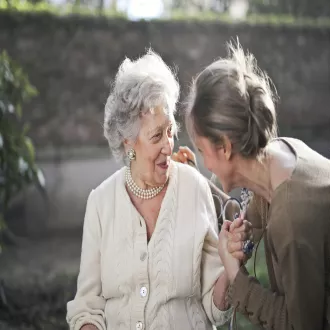Transcription Gestures that Show Insecurity
Just as there are postures that project confidence, there are unconscious gestures that give away our insecurity, nervousness and lack of confidence.
Many of these gestures are archaic reflexes and almost impossible to conceal.
An example of this is the sucking reflex in babies, which manifests itself in adults in more subtle ways, such as putting a pen in the mouth, smoking a cigarette or touching the lips.
These gestures are an unconscious signal that the person is experiencing stress and is seeking reassurance.
Self-comfort gestures and physical barriers
Another very common gesture of insecurity is crossing one's arms.
While crossing one's arms may be a sign of coolness, in a conversational context, it often indicates a defensive or uncomfortable posture.
This gesture is a form of "self-hugging" that seeks to comfort and soothe.
Touching the face, scratching the arm or leg are other signals that indicate nervousness and lack of control over one's actions.
Therefore, in situations such as a job interview, it is important to be aware of these gestures and control them, for example, keeping your hands on the table to avoid unconscious movements.
The use of objects as a shield
In addition to physical gestures, the use of objects as a shield also betrays insecurity.
Playing with a ring, touching a cufflink or holding a coffee cup to our chest are gestures that create a physical barrier between us and the other person in an attempt to protect ourselves.
This type of body language sends an unconscious signal that we are not comfortable in the situation, which can affect the perception of our credibility.
The importance of awareness of our gestures
Most of these gestures are unconscious and are performed automatically. The first step in controlling them is to become aware of them.
Observing ourselves, either on video or by asking someone we trust to point out these gestures, can help us identify them.
Once we are aware, we can work on replacing them with intentional and natural movements that project confidence.
In th
gestures that show insecurity






